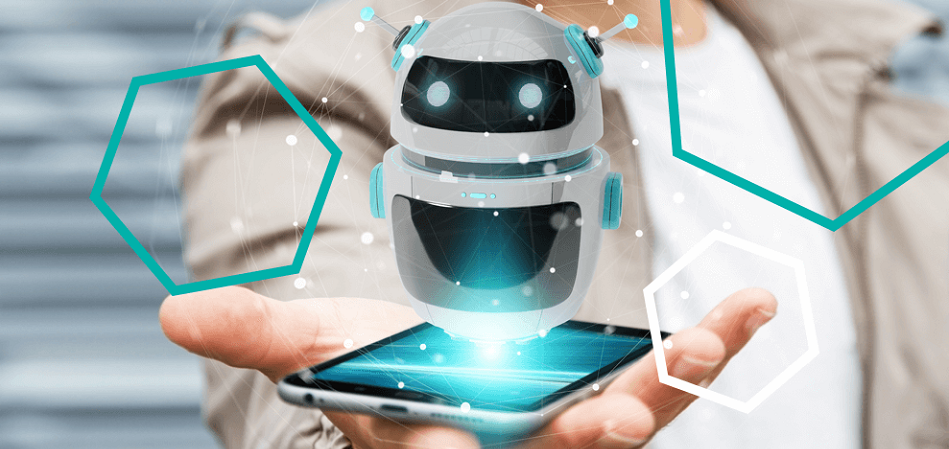A chatbot is a prominent type of AI application used by a variety of businesses for resolving issues related to conversations between the business and its customers, clients, staff, or business partners.
Chatbots are one way businesses can leverage natural language processing (NLP), the AI technology that can discern meaning from the written word, to provide customers with answers to questions about products and services and, in some cases, offer them products and services they may be interested in
In this article, we explain what a chatbot is and provide definitions of it from experts in the field. Additionally, we describe how ML models for chatbots are trained and how this process varies between industries and companies. We also offer context into how conversational AI applications could help drive customer satisfaction by describing an example chatbot vendor and highlighting industry use cases.
What is a Chatbot?

A chatbot is a conversational AI application built to answer user questions. It is powered by NLP and can be trained to field questions from users in multiple languages. Chatbots can be integrated into a variety of digital channels such as websites, mobile apps, and workplace dashboards. Within these channels, a chatbot can be programmed to direct users to the page they are looking for or the right place to complete their task.
For example, an insurance chatbot within a company’s mobile app might be able to automatically direct customers to where they can file a claim or in some cases assist them in filing the claim in the chat window.
Some chatbots are enabled with sentiment analysis capabilities. This allows a chatbot to determine if a question or comment carries a positive or negative sentiment, which may reflect the customer’s experience with the issue they are reporting. A chatbot could then determine how to respond based on that sentiment and possibly offer assistance in a more sympathetic tone if the user appears distressed.
Conversely, if a user expresses a positive sentiment, this can be used as positive feedback to further train the ML model powering the chatbot. A good example of this lies in eCommerce, where customers frequently give verbose positive and negative feedback in their customer service conversations.
If an eCommerce chatbot capable of sentiment analysis received a particularly long message with multiple indicators of happiness and satisfaction, it could use that to influence future conversations.
Expert Chatbot Perspectives from the AI in Industry Podcast
Dr. Sid J Reddy, Chief Scientist at Conversica:
Yoram Bachrach of Google Deepmind – formerly Head of Research at Digital Genius:
Riza C. Berkan, Founder of exClone:
Vendor Spotlight: Kasisto
Kasisto claims their AI platform could help financial institutions and banks create a chatbot for their customers to make payments, review past transactions or account details, and manage their funds. The software can send the chatbot’s conversation to a human customer service agent when it cannot resolve a customer’s problem or answer their question.
Chatbots developed with the KAI platform can be deployed across smartphone apps, desktop sites, and dashboards for internal staff. Kasisto also claims their subsection of KAI for business banking has a deep learning tool that helps analyze data and train new machine learning models.
KAI chatbots can purportedly fulfill certain requests directly in the chatbot’s interface including sending a payment or reviewing the terms of a claim.
Additionally, this system can prompt users with recommendations on more efficient ways to accomplish recent tasks. For example, one of these prompts could read, “You Sent 100 US dollar wires of $50 each to Singapore Yesterday. Did you know you could send a foreign-exchange ACH payment instead? Sign up here.”
The following video is a demonstration of a KAI chatbot made for Mastercard. It shows how the chatbot can answer customer questions containing account balances and other personal data:
Kasisto claims they have helped JP Morgan and their treasury services divisions offer their clients a chatbot that can answer customer questions. JP Morgan purportedly deployed the chatbot built on the KAI platform to help their customers navigate through their expansive website. This was intended to help them accomplish tasks such as sending wire transfers and exporting data from multiple accounts to find account balances. According to Kasisto, JP Morgan is still testing this chatbot in a pilot project.
Industry Use Cases
Healthcare
Diagnostic Chatbots
Established healthcare companies and AI startups in healthcare could use chatbots to help their customers identify their symptoms. While a chatbot cannot give a formal medical diagnosis, it can give patients a rough estimate that may enable them to ease their symptoms at home. If the sickness or injury is more serious, the chatbot may advise the patient to see a doctor or explain how to ease symptoms while they wait for their next appointment.
Similarly, some healthcare chatbots are made to determine the nature of a patient’s mental health problems. Patients can describe how they are feeling to these types of chatbots and they will usually provide basic methods of coping with or reframing their anxieties. Some companies such as Woebot.io claim their chatbot is based on the principles of cognitive-behavioral therapy.
Virtual Assistants for Healthcare Employees
Some healthcare companies use chatbots to provide administrative and clinical assistance to their managers. Administrators can automate scheduling, texts, and emails using this type of chatbot as well as set appointment reminders and amplifying productivity. This may help healthcare companies save time and money on customer service and planning.
Insurance
Claims and Customer Service
Insurance companies have two important areas in which they can leverage customer service chatbots. One of these is in business insurance, where established small businesses may ask questions regarding risk management, what kind of policy they might need, and how the insurance company can help them. The other is in consumer-grade insurance such as auto insurance and life insurance.
These types of companies can offer chatbots to help their customers find answers to insurance questions as well as help them decide on a policy that works for them.
Some insurance chatbots allow customers to make payments, file claims, and subsequently the status of a claim. To file a claim, users need to select the type of claim they are filing and the damage that occurred. For auto insurance, this may include the insurance information of the other parties who may be at least partly responsible for the damage.
Onboarding New Customers
Another prominent use case for insurance chatbots is in customer onboarding. In addition to helping customers identify the best policy for them, a chatbot can be used to intake customer information and automate the setup of their account. Once the user inputs their contact and financial information, they would simply follow the chatbot’s prompts until their account is set up. Chatbots with this capability usually offer claim filing status checking as well.
Banking
Customer-facing Banking Operations
Chatbots can also help banks offer their customers help with managing funds, payments, and reviewing transactions and account details. Customer service chatbots are the most common chatbot applications in banking and can usually handle varied customer questions on top of enabling mobile banking functions.
While these chatbots rarely serve as automated financial advisors, users can still move funds between accounts and manage which account they pay their bills from. A bank can benefit from this type of chatbot because it can allow them to identify trends in customer questions and update their information to adapt to changes in those trends.
Some AI companies market their AI platforms for chatbots with the ability to discern the sentiment of a message a customer sends the chatbot. This can be accomplished with NLP sentiment analysis, which is an AI capability that scores messages for how positive or negative they are.
If a customer asks, “I have been trying to access my inbox for hours. How do I do it?” a chatbot with sentiment analysis should be able to discern a negative sentiment. Phrases such as “trying to… for hours” likely signal negativity to the machine learning model. This can help banks determine how effective their customer service is and identify areas to improve on.
Financial Services
Travel Planning
The financial services industry has three prominent use cases for chatbots right now. The first is travel planning, in which a chatbot can help individual professionals or companies plan for business travel expenses and create itineraries for the employees they will be sending abroad. These chatbots can also assist users in planning for the weather at their destination and where the nearest hotels, cafes, and possibly clothing stores are. For example, some of these chatbots can recommend bringing a jacket on a business flight or recommend the best hotel for the customer in terms of distance from their meeting or event.
Financial Advisory
The second is financial advisory, which can allow the customer to create a personal budget and financial plan for the chatbot to follow. Users may ask “can I afford this?” in reference to a certain product, and the chatbot can use that financial plan along with their banking information to determine whether the purchase is within the budget. These chatbots can also offer recommendations on how to save money or remind users of upcoming expenses.
Header Image Credit: Sabiogroup




















